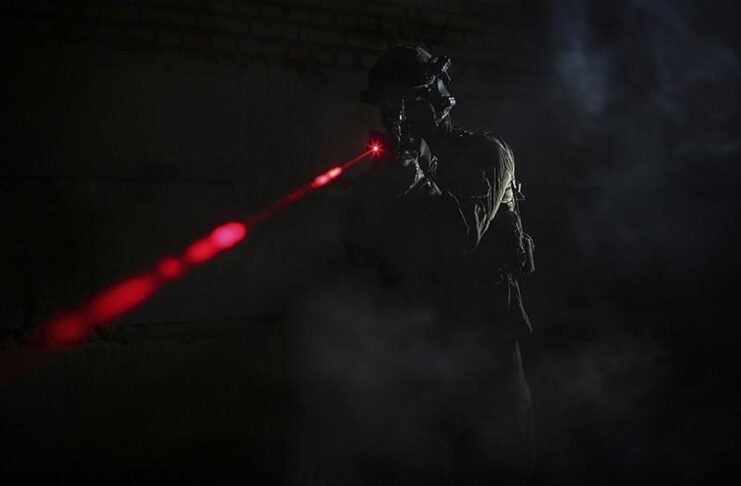ANALYSIS – While some have heard of the Energy Department's civilian NEST group – Nuclear Emergency Support Team – whose job is to search for nukes with various sensor and means (such as specially equipped helicopters), few have heard of America's military special forces trained to intervene and defuse potential crises involving nuclear devices.
And these special ops forces really are something else.
First, let's note that the civilian NESTs belong to a semi-autonomous agency within DOE called the National Nuclear Security Administration (NNSA).
Their website explains that: “NEST is composed of world-class scientists, engineers, emergency managers, and technicians recruited from the National Laboratories, plants, and sites who execute the incident response missions for which DOE and NNSA are responsible.”
As we can see NESTs are purely civilian and their mission is a highly technical one, and mostly U.S.-based.
But when you need military operators to get down and dirty in a nuke emergency at home or abroad, you have the little-known warriors from the Army's three ‘Nuclear Disablement Team' (NDT) based at Aberdeen Proving Ground, Maryland.
They are part of the 20th Chemical, Biological, Radiological, Nuclear, Explosives (CBRNE) Command.
Assets from the 20th CBRNE Command are located on 19 different bases in 16 states and are ready to respond to threats worldwide.
The Army adds that the CBRNE Command is home to 75 percent of the active-duty U.S. Army Explosive Ordnance Disposal (EOD) technicians and CBRN specialists, as well as the 1st Area Medical Laboratory, CBRNE Analytical and Remediation Activity and five Weapons of Mass Destruction Coordination Teams.
Officers in this unit advise military leaders and policymakers on counter WMD and nuclear issues and they serve in 20th CBRNE Command's three Nuclear Disablement Teams.
“NDTs exploit and disable nuclear and radiological WMD infrastructure and components to deny near-term capability to adversaries and they facilitate follow-on WMD elimination operations.”
The teams are self-deployable. They can go in, recon the site, collect samples and identify them to determine what hazards may be present and if there's a threat.
“They're able to go in and do limited disablement operations, meaning, possibly shut down a reactor if it's not being managed at that time so that threat no longer exists [in the area units are conducting operations],” a spokesman for the 20th CRBN said.
But these NDTs don't operate alone.
They often train alongside elite Army combat units that “might one day have to [take] them into — and back out of — a doomsday-like scenario.” Combat units like Green Berets and Rangers.
As Task and Purpose reported:
Nuclear Disablement Team 1 recently held training with the 7th Special Forces Group and the 75th Ranger Regiment, the kind of special operations units they may work alongside during a major nuclear emergency.
Steven Modugno, a spokesperson for the 20th Chemical, Biological, Radiological, Nuclear, Explosives Command (CBRNE), said it's uncommon for NDTs to train with the type of units that would escort them in real-world incidents.
“We always say, ‘Train as you fight.' For both the Rangers and the NDTs, going through a facility is what realistic, tough training looks like,” Modugno said. “They're able to practice and refine processes and figure out how they can effectively work together at a site like that.”
NDTs train for doomsday-style scenarios like sabotaged nuclear power plants and or rogue nuclear devices. The protective suits they wear, along with a respirator protecting them from nuclear and radiological threats, make combat operations a lot more difficult.
Meanwhile the Army explains:
NDTs directly contribute to the nation's strategic deterrence by staying ready to exploit and disable nuclear and radiological Weapons of Mass Destruction infrastructure and components to deny near-term capability to adversaries.
Nuclear Disablement Teams also serve on the FBI-led National Technical Nuclear Forensics Ground Collection Task Force, which stays ready to conduct post-blast nuclear forensics.
As the U.S. military prepares to deter or defeat near-peer (or peer) adversaries, having NDTs trained, equipped and ready to deploy is critical for supporting both regular troops and Special Forces units during large-scale combat operations.
Let's hope they don't need to be used anytime soon, especially not on American soil.
The opinions expressed in this article are those of the author and do not necessarily reflect the positions of American Liberty News.
READ NEXT: Top Republican Accuses Trump Candidate Of Fraud, Issues Fiery Demand?!



Please allow time before your comment appears, as all comments are reviewed and subject to moderation. View our Comment Policy here.